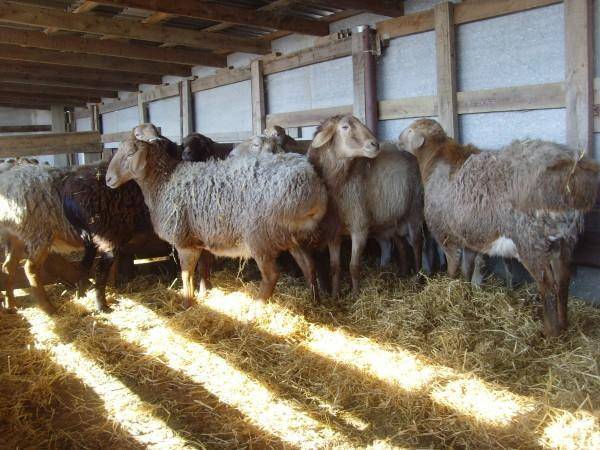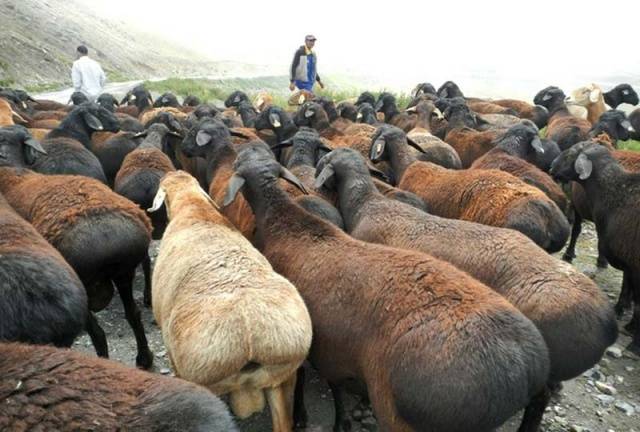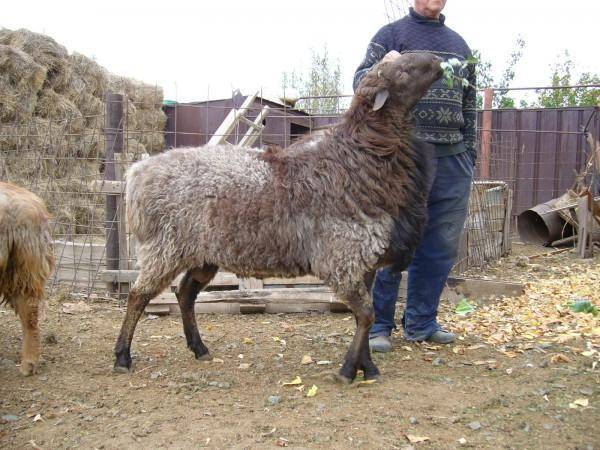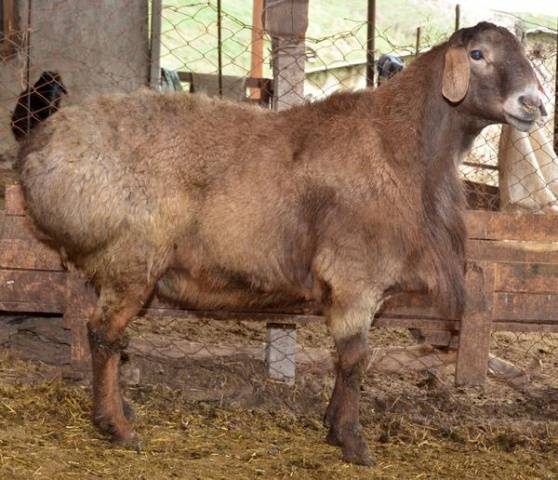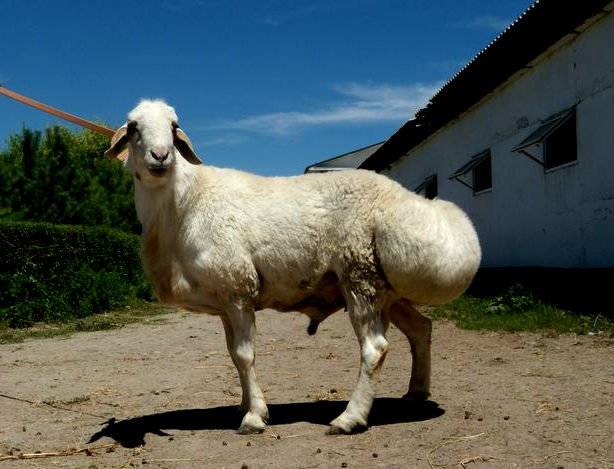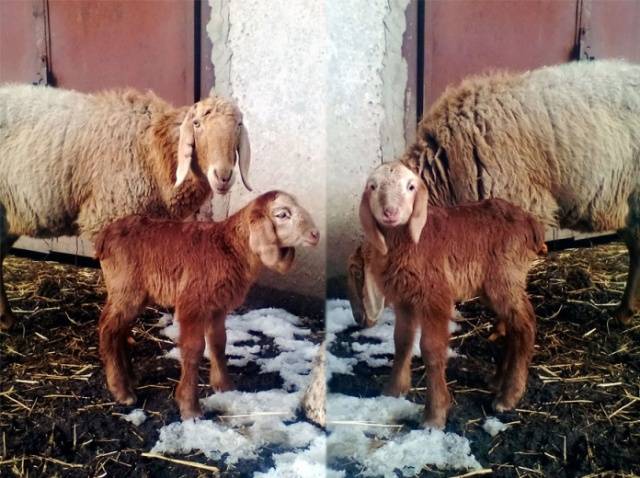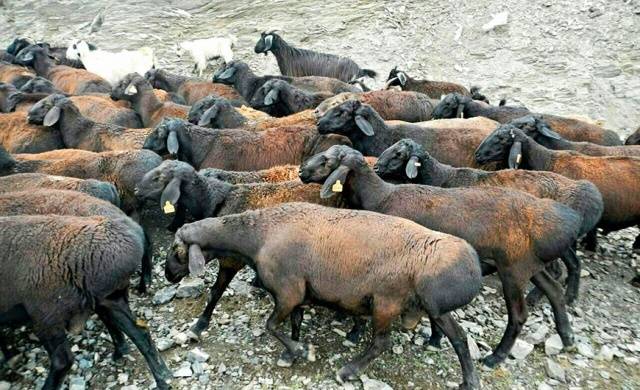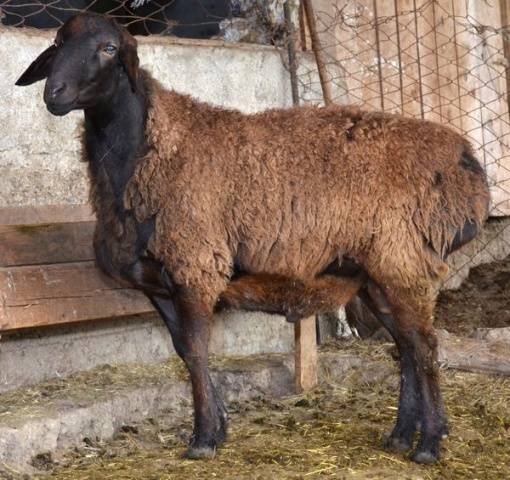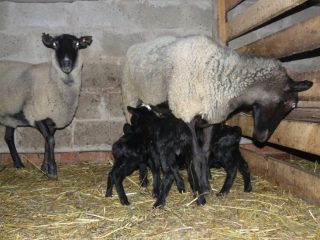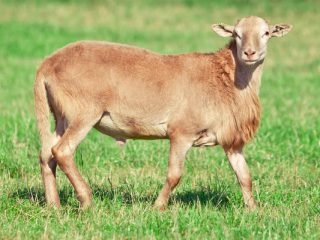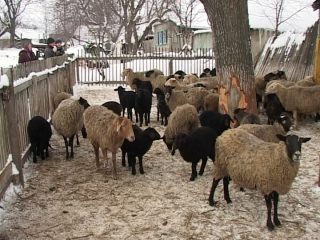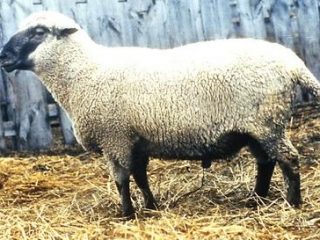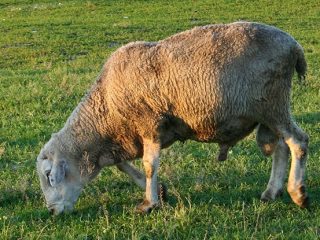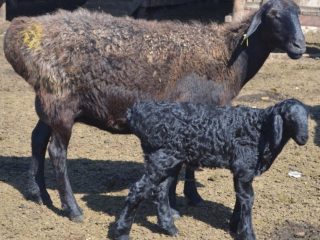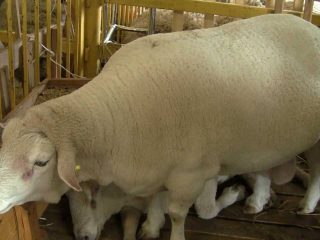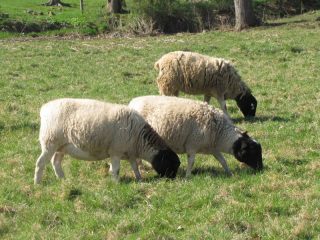Content
The record holder for size among sheep breeds is the Gissar sheep, which belongs to the group of meat and lard. Being a relative of the Karakul sheep breed widespread in Central Asia, it is nevertheless considered an independent breed. The Gissarians were taken out in an isolated mountainous area by the method of folk selection with complete isolation from the influence of other "outside" breeds of sheep. When breeding gissars, local breeds were used that lived on the spurs of the Gissar ridge.
Usually, the so-called aboriginal breeds of animals are much inferior in their characteristics to those specially selected by professional zootechnicians in order to improve the given qualities. But the Hissar sheep were one of the few exceptions.
This breed is the largest in the world among meat and greasy sheep. The average weight of ewes is 80-90 kg. Individuals can weigh 150 kg. For a ram, the normal weight is just 150 kg, but the champions are able to work up and 190 kg. Moreover, about a third of this weight is fat. Hissars are able to accumulate fat not only in the fat tail, but also under the skin and on the internal organs. As a result, the total weight of "fat tail" fat can reach 40 kg, although the average is much more modest: 25 kg.
Today, Hissar sheep are bred all over Central Asia, as the best breed among fat-tailed meat and lard. As well as earlier "aboriginal" Akhal-Teke, nowadays the Hissar sheep is already considered a cultural breed and bred it, using scientific zootechnical methods.
One of the best herds of gissars in Tajikistan today belongs to the former head of the breeding farm of Gissar sheep, which were previously bred at the "Put Lenina" pedigree farm.
The Gissar breed of sheep is perfectly adapted to the difficult conditions of the mountains with their sharp changes in temperature and altitude. The Gissar sheep is able to travel considerable distances when moving from winter lower pastures to summer high-mountainous ones.
Description of Hissar sheep
Sheep of the Hissar breed are tall animals with an elegant bone, massive body and high legs and a very short tail, not exceeding 9 cm in length.
Hissar sheep breed standard
Usually this tail is hidden in the folds of the fat tail, causing irritation of the skin of the fat tail when the sheep moves.
It would seem that the combination of an elegant skeleton and a massive body are incompatible concepts. But the Hissars could use as their justification the favorite phrase of overweight people: "I just have a wide bone." The bulk of the body of the gissars is given not by the skeleton, but by the accumulated fat. This "unnatural" combination of thin legs and fat accumulated under the skin is clearly visible in the photo below.
The growth of Hissar ewes is 80 cm at the withers. Sheep are 5 cm higher. The head is small in comparison with the body. It's just that fat does not accumulate in the head. There are no horns. The wool of the gissars is not of particular value and is used by the local population of Central Asia simply "so that the good does not go to waste." There is a lot of awn and dead hair in the wool of guissars, the fineness is of poor quality. Up to 2 kg of wool can be obtained from gissar per year, which the inhabitants of Central Asia use to make coarse, low-quality felt.
The color of gissars can be brown, black, red and white.Often the color depends on the breeding area, since in the mountains, due to the relief, literally in two neighboring valleys, there can be not only "their own" colors of livestock, but even separate breeds of animals may appear.
The main direction of cultivation of gissars is obtaining meat and lard. In this regard, there are three intra-breed types in the breed:
- meat;
- meat-greasy;
- sebaceous.
These three types can be easily distinguished even by eye.
Intra-breed types of Hissar sheep
The meat type is distinguished by a very small fat tail, which is hardly noticeable, and often completely absent. Among Russian sheep breeders, it is this type of gissar that is most popular, from which you can get high-quality meat and not think about what to do with the little-demanded fat tail fat.
The meat-greasy type has a medium-sized fat tail, high located on the body of a sheep. The requirement for a fat tail is not to interfere with the movement of the animal.
The greasy type has a highly developed fat tail, reminiscent of a sack dangling from the back of a sheep. Such a fat tail can make up almost a third of a sheep's body. And both in size and weight. From the greasy type of gissars, up to 62 kg of fat tail are sometimes obtained.
The characteristics of gissars in terms of obtaining lambs from them are low. The fertility of ewes is no more than 115%.
If lambs are weaned from ewes early, then a sheep can get 2.5 liters of milk per day for one and a half months.
Features of the content and the relationship of living conditions with the health of gissars
The Hissars are a breed adapted to nomadic life. Making a transition to a new pasture, they are able to cover up to 500 km. At the same time, their original homeland is not distinguished by an excess of moisture and hisssars prefer a dry climate and hard dry soil of high humidity and marshy meadows. If gissars are kept in dampness, their famous health begins to malfunction, and the sheep fall ill.
In the video above, the owner of the guissars says that white hooves are undesirable as they are softer than black ones. It is not known where this superstition came from: from the equestrian world to the sheep world, or vice versa. Or maybe it arose independently of each other. But practice proves that with the correct maintenance of the animal, the white hoof horn is in no way weaker than the black one.
The strength of the hoof horn does not depend on color, but on heredity, good blood supply to the hoof tissues, a well-designed diet and correct content. With a lack of movement, blood circulates poorly in the limbs, not delivering the required amount of nutrients to the hooves. As a result, the hoof is weakened.
When kept in dampness and weakened immunity, hooves of any color begin to rot to the same extent.
Long walks, dry bedding and proper nutrition are essential for maintaining healthy rock sheep.
Growth features of Hissar lambs
Gissarov is distinguished by high early maturity. Lambs on large volumes of mother's milk add 0.5 kg per day. In the harsh conditions of summer heat and winter cold, with constant transitions between pastures, lambs grow very quickly and are ready for slaughter already in 3 - 4 months. 5-month-old lambs already weigh 50 kg. Keeping a flock of gissars is inexpensive, as sheep are able to find food for themselves in almost any conditions. This is what determines the benefits of breeding Hissar sheep for meat.
Conclusion
In Russia, the traditions of eating fat tail fat are not very developed and the Gissar breed of sheep would hardly find demand among native Russians, but with the increase in the share of immigrants from Central Asia among the Russian population, the demand for meat and lard sheep is also growing. And today Russian sheep breeders are already keenly interested in sheep breeds that do not yield so much wool as fat and meat. Among such breeds, the Hissar is in first place.
